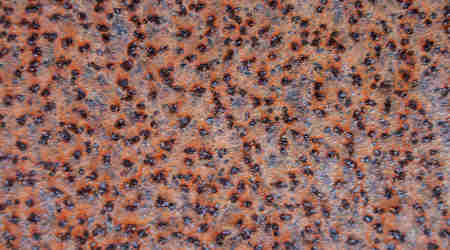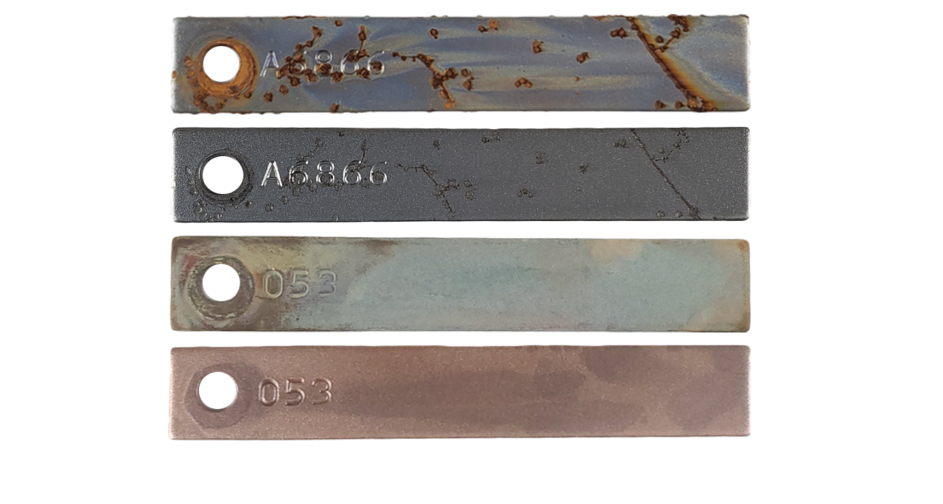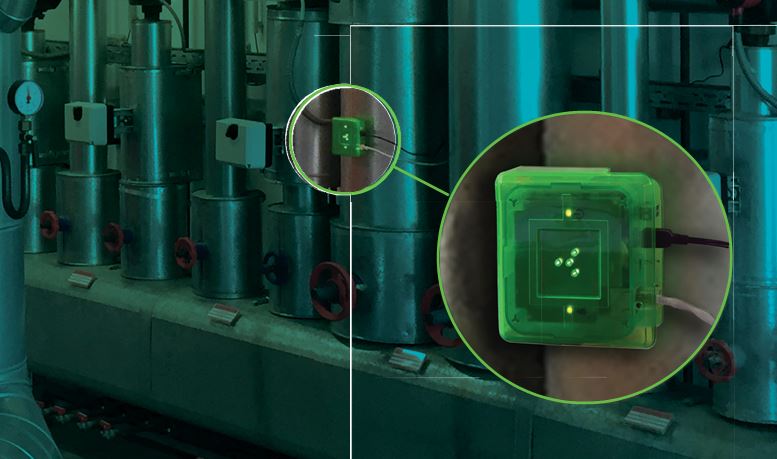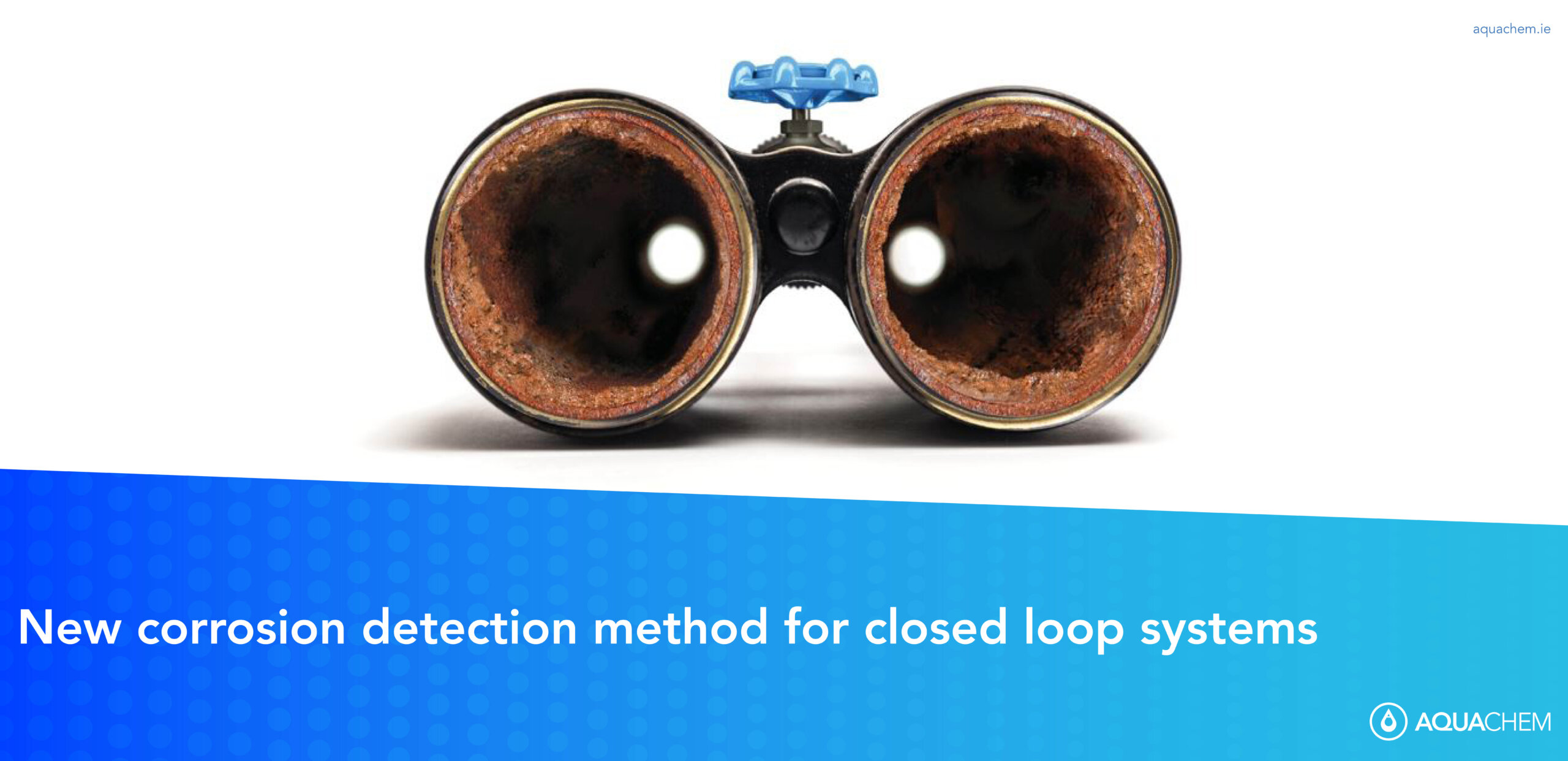New corrosion detection method for closed loop systems
Closed loop systems can be deceptive; they are relatively tight and lose little or no water, they require very little make-up water and they don’t experience evaporation which makes them seem stable and reliable. However, they can still experience a number of issues which could damage the integrity of your water system; including corrosion.
Since they don’t demand daily or weekly treatment checks closed loop systems are often overlooked by facility managers which should not be the case as they are critical to ensure your water systems are working efficiently and safe.
Closed loop systems are not immune to problems, one of which is corrosion, Corrosion can be defined as the destruction of a metal by chemical or electrochemical reaction with its environment.
Corrosion can lead to poor energy transfer in heat exchangers and the creation of unfavourable microbiological conditions which can lead to complete failure in your system. In a closed-loop system, oxygen pitting is the most common type of corrosion. Symptoms of oxygen pitting may be rusty water or recurring maintenance on bearings due to the abrasion caused by the corrosion products against the seal surfaces.

Corrosion coupons

For these reasons your water must be treated and monitored for corrosion and one of the most popular methods of doing this is by use of Corrosion Coupons.
Corrosion coupons are used to monitor the corrosivity of a system. Corrosion coupons are installed to duplicate the corrosion rate experienced in piping
Corrosion coupons are typically constructed from carbon steel, usually these are generic carbon steel or can be selected to match the material used for a specific purpose.
The coupons are installed in a parallel stream with the water for a given time specified, usually between 3 – 6 months. After the exposure time, the coupon is removed and its surfaces are cleaned. After cleaning, coupon weight is measured and compared to the initial weight, over the exposure time. The result is the corrosion rate for that period.
It is a simple and effective tool that gives a quantitative estimate of corrosion rates that take place within a specific operating system.
This method also comes with some distinct disadvantages which include
- Delayed Data
In a typical monitoring program, coupons are exposed for a 3 month – 12 months duration before being removed for laboratory analysis. As such, an indication of a corrosion event may only be obtained significantly after the event may have occurred. When the problems become noticeable from the outside it is often far too late and major, very costly repairs may already be required
- Lack of Time Determination
If a specific corrosion event occurs during the period of exposure, the coupon will not be able to identify the time of occurrence
- Time Averaging
Depending upon the peak corrosion rate of a corrosion event and its duration, the coupon will not indicate the peak corrosion rate of the event, and short-term events may not even register a statistically significant increased weight loss
- Galvanic Corrosion
Corrosion coupons are typically isolated from any metal-metal contact. Thus, they are unaffected by the galvanic interactions present in the system
New Technology which makes the invisible visible
Earlier this year (2021) Aquachem came across a new intelligent sensor technology which can determine if corrosion is developing in your system within 24 hours. Not only will this determine if corrosion is present but along with its software, it will continue to monitor and record any changes allowing early detection of corrosion before any damage is caused.
How it works
If you can’t measure it you can’t improve it!
The corrosion monitors use patented technology, to measure mass loss of a 50 micron coupon of Iron every 20 minutes which is then algorithmically calculated across a 7 hour period to produce an annualised corrosion rate in micron metres per year, the industry standard measurement.
This figure is then graphically formatted, as the image below, onto your laptop to provide a maximum 10 year corrosion profile which is simply front loading continuously
At the tip of the probe sits a small iron coupon, which can corrode and thus reduces its mass ,the technology measures this mass-loss very precisely.

This is how corrosion is measured?
The rate of corrosion, measured in micron / year, and the interval temperature are continuously stored by the logger. A specially developed software package enables that data to be quickly and simply visualised and evaluated by all parties.
An early alert protects against damage, where the alert function enables the operator of a system to be warned in-time when the corrosion rate reaches a critical value (e.g. via the Building Management System).
The units are factory set, albeit adjustable via the same Dashboard software, to record and, if necessary, alarm when the rate exceeds 24µ m/Year.
Should this alarm exceed 7 days or 7 times in 7 weeks, attendance and a site investigation should occur without delay.
The installation of one of these units provides early warning signs, and even aid the prevention, of pipework corrosion that all Clients & Building Owners fear.

Conclusion
We are delighted to offer this new technology to all of our clients so that they can be re-assured their closed loop systems are operating safely in the background.
It is always better to catch any potential issue at an early stage to avoid any costly damage to your equipment.
If you want to find out more about this technology and the how it can help you and your business don’t hesitate to get in touch.








